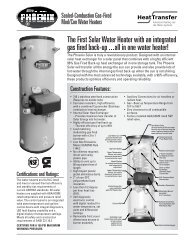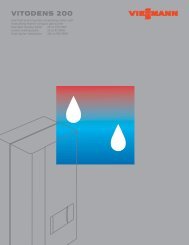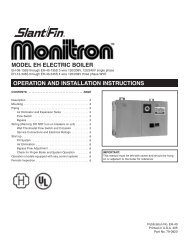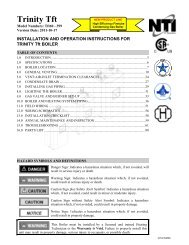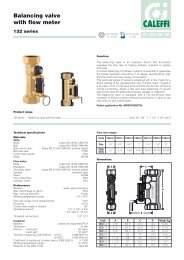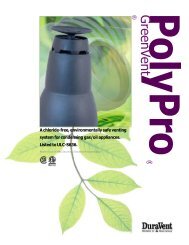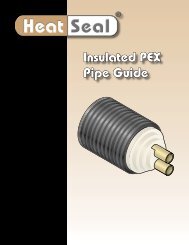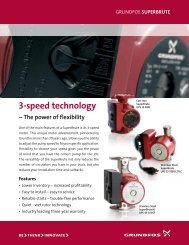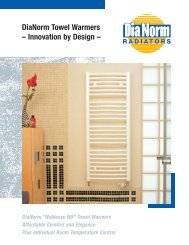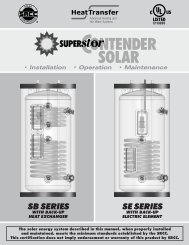Apricus Solar Water Heating System Installation and Operation ...
Apricus Solar Water Heating System Installation and Operation ...
Apricus Solar Water Heating System Installation and Operation ...
Create successful ePaper yourself
Turn your PDF publications into a flip-book with our unique Google optimized e-Paper software.
suitably protected.<strong>Apricus</strong> <strong>Solar</strong> Collector <strong>Installation</strong> & <strong>Operation</strong> Manual - USAd) The <strong>Apricus</strong> controllers are supplied with a st<strong>and</strong>ard North American plug. No cutting or extension of thecable is permitted unless completed by a qualified electrician.e) The <strong>Apricus</strong> controller is suitable for INDOOR use only. Also, ensure the operating temperature is withinthe acceptable range 32°F - 122°F <strong>and</strong> the unit is not exposed to high humidity or condensation.6.5. Controller Functionsa) Controller Purpose: The primarily purpose of the <strong>Apricus</strong> controller is to regulate the operation of thecontroller circulation pump. Many additional functions are also available, including: regulating tanktemperature, providing freeze protection, measuring energy output <strong>and</strong> more.b) Basic <strong>Operation</strong>: In a solar water heating system, maximum efficiency is attained by extracting heatfrom the collector as quickly as possible, thus allowing the collector to run at the lowest possibletemperature. The controller achieves this by measuring the temperature at the outlet of the solar collector<strong>and</strong> also the bottom of the solar storage tank. This temperature difference is referred to as a delta-t, oftenwritten as $t. When the collector is hotter than the bottom of the tank by a set amount, usually between 8°F<strong>and</strong> 20°F (5°C <strong>and</strong> 11°C) the controller will supply power to the pump which circulates water through thecollector. Once the temperature difference drops below a minimum the pump turns off again. This cyclecontinues throughout the day. The frequency <strong>and</strong> duration of pump operation is dependent on solarradiation levels.If the variable speed function is activated (recommended), the speed of the pump will be automaticallyregulated by the controller to maintain an optimum flow rate <strong>and</strong> keep the collector between the maximum<strong>and</strong> minimum delta-t set levels. This maximizes the system efficiency <strong>and</strong> also reduces electricity usage.c) Basic Functions: Basic functions for closed loop <strong>and</strong> direct flow system are presented in sections 7.11.2<strong>and</strong> 8.10.2 respectively. Also, refer to the system schematics in the <strong>Apricus</strong> OG-300 <strong>System</strong>s Manual forrecommended settings for each system configuration.d) Pump Run Times with ON/OFF Pump Control: The correct delta-t setting (dTMax tank1 & dTMin tank1)will vary slightly from system to system depending on the flow rate <strong>and</strong> length of the pipe run. Optimally,each time the pump operates, the heat in the collector is transferred all the way back to the tank <strong>and</strong> is notallowed to sit in the Return Line, where it would otherwise loose heat.For example: A 16 ft (5 m) pipe run in #” copper has a fluid content of about 0.24 gallons, plus 0.2 gallonsfor an AP-30 collector. With a total of 0.44 gallons, a flow rate of 0.8 gpm would take 20-25 seconds totransport the hot fluid in the collector back to the tank. A longer pump run time would waste electricity <strong>and</strong>promote heat loss from the pipes.A more common pipe run length of 40 ft (12 m) in #” copper has a fluid content of 0.48 gallons, plus 0.2gallons for an AP-30 collector. With a total of 0.68 gallons, a flow rate of 0.5 gpm would take about 60seconds to transport the fluid in the collector back to the tank.This basic calculation can help to determine how long the pump should be running for each cycle. Seebelow for recommended controller settings. The operation of the pump can be tested by feeling the flow<strong>and</strong> return lines (or using temperature probes if too hot). The pump should turn off shortly after the heat hasreturned back down the return line <strong>and</strong> the temperature drops to a similar level as the flow line.e) Recommended Delta-t Settings for ON/OFF:If the pump is shutting off prematurely, reduce the dTmin value.If the pump is running for too long increase the dTmin value.i) Direct Flow <strong>System</strong>s20’ pipe run suggested setting: dTMax = 14°F (8°C)ii) Closed Loop <strong>System</strong>20’ pipe run suggested setting: dTMax = 21°F (12°C)dTMin = 7°F (4°C)dTMin = 4°F (2°C)dTMin = 11°F (6°C)dTMin = 7°F (4°C)Copyright 2011 – <strong>Apricus</strong> Inc Doc: A7-05.4.1.4-PB-1.9 Page 57 of 126



